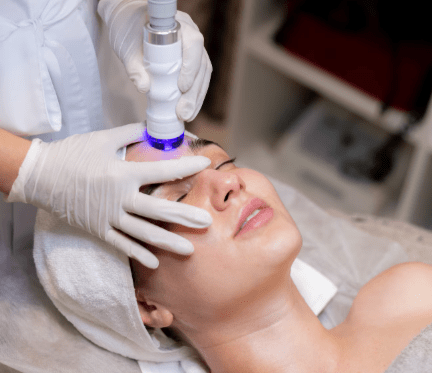Ptosis, or drooping of the upper eyelid, can affect both children and adults. While it may seem like a minor cosmetic issue, ptosis can interfere with vision and may signal an underlying medical condition. Understanding the different types of ptosis—congenital vs. acquired—is key to accurate diagnosis and appropriate treatment.
In this article, we’ll break down the differences between congenital ptosis and acquired ptosis, their causes, signs, and the treatment options available.
What Is Ptosis?
Ptosis (also called blepharoptosis) refers to the abnormal lowering of the upper eyelid. This condition can occur in one (unilateral) or both (bilateral) eyes. The severity can range from mild (barely noticeable) to severe (blocking part or all of the pupil).
Ptosis is categorized into two main types:
- Congenital Ptosis – present at birth
- Acquired Ptosis – develops later in life due to various causes
Congenital Ptosis
What Is It?
Congenital ptosis is present at birth and is most often due to poor development of the levator palpebrae superioris muscle—the muscle responsible for lifting the upper eyelid.
Causes
- Myogenic dysfunction: The levator muscle is underdeveloped or weakened.
- Genetic factors: It may run in families, although not always.
- Associated conditions: Some congenital syndromes, such as Marcus Gunn jaw-winking syndrome, Blepharophimosis syndrome, and congenital third nerve palsy, include ptosis as a symptom.
Symptoms
- Droopy upper eyelid present from birth
- Uneven eyelids (asymmetry)
- Chin-up head posture to compensate for blocked vision
- Risk of amblyopia (lazy eye) or astigmatism if vision is obstructed
Diagnosis
- Detailed eye exam by a pediatric ophthalmologist
- Visual acuity tests
- Eyelid function measurements
- Observation of compensatory head posture
Treatment
- Close monitoring in mild cases with no visual obstruction
- Eyelid surgery (levator resection or frontalis sling) in moderate to severe cases
- Early treatment is important to prevent vision development issues
Acquired Ptosis
What Is It?
Acquired ptosis develops after birth, typically in adulthood, and is more common than congenital ptosis. It can occur suddenly or gradually over time.
Types & Causes
- Aponeurotic Ptosis
- Most common form in adults
- Caused by stretching, thinning, or detachment of the levator muscle tendon
- Common with aging or after eye surgeries like cataract removal
- Neurogenic Ptosis
- Caused by nerve damage affecting the eyelid muscles
- Associated with conditions like:
- Horner’s syndrome
- Third cranial nerve (oculomotor) palsy
- Diabetes-induced nerve damage
- Myogenic Ptosis
- Caused by muscle weakness from diseases like:
- Myasthenia gravis
- Muscular dystrophies
- Often accompanied by fatigue-related drooping
- Caused by muscle weakness from diseases like:
- Mechanical Ptosis
- Eyelid droops due to weight from:
- Tumors
- Cysts
- Swelling
- Excess skin (dermatochalasis)
- Eyelid droops due to weight from:
- Traumatic Ptosis
- Caused by injury to the eyelid or surrounding muscles/nerves
Symptoms
- Gradual or sudden drooping of the eyelid
- Visual obstruction
- Fatigue when trying to keep eyes open
- Asymmetry of eyelids
- May be accompanied by double vision, eye movement abnormalities, or facial weakness depending on the underlying cause
Diagnosis
- Comprehensive eye exam
- Review of medical history and medications
- Neurological evaluation if nerve involvement is suspected
- Blood tests (e.g., for myasthenia gravis)
- Imaging (CT or MRI) in cases of sudden onset or suspected nerve/tumor involvement
Treatment
- Treat the underlying cause, if present (e.g., myasthenia gravis, diabetes)
- Ptosis surgery (levator advancement, frontalis sling) for persistent cases
- Nonsurgical options: Prescribed eyedrops like oxymetazoline (Upneeq) for temporary lifting in mild cases
Key Differences: Congenital vs. Acquired Ptosis
| Feature | Congenital Ptosis | Acquired Ptosis |
|---|---|---|
| Onset | At birth | Later in life (childhood to adulthood) |
| Common Cause | Poor muscle development | Aging, surgery, nerve/muscle disorders |
| Affected Eye(s) | Usually one eye | One or both eyes |
| Risk to Vision | High (amblyopia in children) | Depends on severity |
| Head Posture | Often tilted up to compensate | Less common |
| Treatment Urgency | Early treatment to avoid vision issues | Depends on underlying cause |
When to Seek Medical Attention
Regardless of age, see a doctor if you or your child experience:
- New or worsening eyelid droop
- Difficulty seeing due to drooping eyelid
- Sudden onset ptosis (could indicate a neurological emergency)
- Eye movement changes or double vision
- Associated muscle weakness or fatigue
An ophthalmologist or oculoplastic surgeon can determine the cause and recommend the best treatment.
Conclusion
Ptosis can affect anyone—from newborns with congenital muscle issues to adults experiencing age-related or neurologic conditions. Understanding the differences between congenital and acquired ptosis is crucial for proper diagnosis and treatment. Whether for functional or cosmetic reasons, safe and effective options are available to correct droopy eyelids and restore clear vision.
If you suspect ptosis in yourself or a loved one, don’t delay a professional evaluation—early intervention can prevent long-term complications, especially in children.




